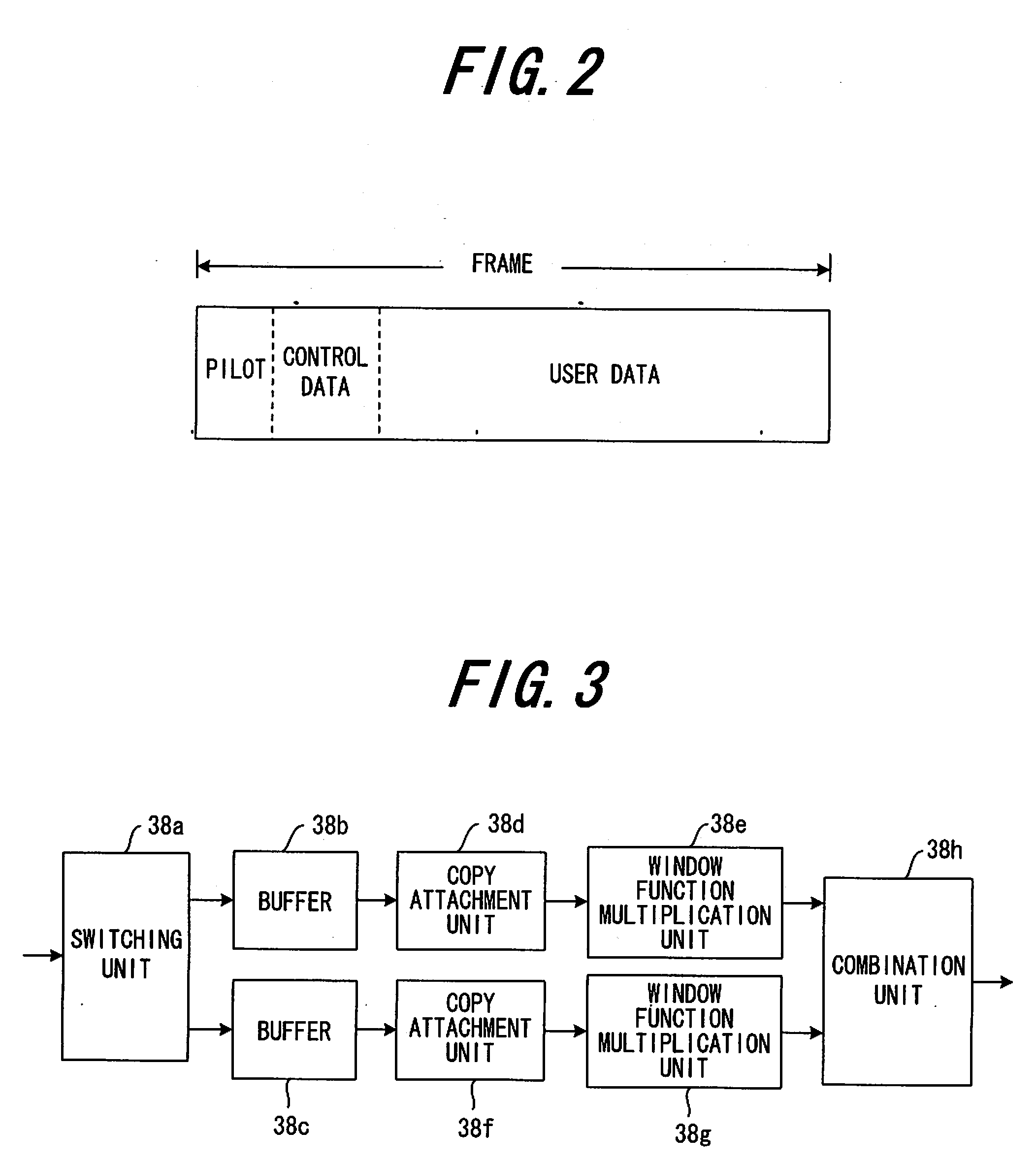Digital mobile communication system and transmission/reception method thereof
a mobile communication system and digital mobile technology, applied in the field of digital mobile communication system and transmission/reception method thereof, can solve the problems of inability to easily decide the position, shorten the substantial cp length, and deterioration of the final reception, so as to achieve the effect of using a cp
- Summary
- Abstract
- Description
- Claims
- Application Information
AI Technical Summary
Benefits of technology
Problems solved by technology
Method used
Image
Examples
first embodiment
(A) First Embodiment
(a) Transmission Station
[0057]In a first embodiment of the invention, the case will be explained for a digital mobile communication system that uses the OFDM method in which a receiving station receives from a transmission station a signal for which window function processing has been performed, and demodulates that signal.
[0058]FIG. 1 is a block diagram of a transmission station of a first embodiment of the invention.
[0059]An error correction encoding unit 31 performs encoding of a data signal so that a receiver can perform error correction, and a data modulation unit 32 performs data modulation (for example, QPSK modulation) of the encoded data signal. On the other hand, an error correction encoding unit 33 performs data encoding of a control signal that includes information that indicates the window width of a window function processing that is applied by a window function multiplication unit (described later) and the data modulation method used, and a data mo...
second embodiment
(B) Second Embodiment
(a) Theory
[0076]FIG. 11 is a drawing showing the theory of a second embodiment of the invention. In the first embodiment, the reception timing Tr (see FIG. 8) was detected and the extraction position 2 of the effective signal component was shifted by Nwin / 2 forward from the reception timing. In this second embodiment of the invention, the extraction position of the effective signal component (called the reference extraction position) is fixed, and the reception timing is control led such that it is shifted by Nwin / 2 backward from the reference extraction position.
[0077]In other words, in this second embodiment, as shown in FIG. 11, reference target reception timing TT0 is set, and the start of the extraction position of the effective signal component is fixed at a position after the CP period Tcp from that timing TT0. Moreover, the actual reception timing Tr is control led so that the positional relationship between the reference extraction position and the actu...
third embodiment
(C) Third Embodiment
(a) Theory
[0095]FIG. 16 is a drawing for explaining the theory of a third embodiment of the present invention.
[0096]In the second embodiment, the receiving station calculates the time difference ΔT1 (=RT1−TT1) between a target reception timing TT1 and actual reception timing RT1, and sends that time difference ΔT1 to the transmission station as a transmission timing control value, then the transmission station controls the transmission timing so that ΔT1 becomes zero. In this third embodiment, the transmission station calculates the transmission control value ΔT1 itself, and controls the transmission timing so that ΔT1 becomes zero. However, the receiving station measures the time difference δT1 between the reference reception timing TT0 and the actual reception timing from each transmission station, and sends the result to each transmission station.
[0097]In order to execute the same transmission timing control as that executed in the second embodiment, a transmi...
PUM
 Login to View More
Login to View More Abstract
Description
Claims
Application Information
 Login to View More
Login to View More - R&D
- Intellectual Property
- Life Sciences
- Materials
- Tech Scout
- Unparalleled Data Quality
- Higher Quality Content
- 60% Fewer Hallucinations
Browse by: Latest US Patents, China's latest patents, Technical Efficacy Thesaurus, Application Domain, Technology Topic, Popular Technical Reports.
© 2025 PatSnap. All rights reserved.Legal|Privacy policy|Modern Slavery Act Transparency Statement|Sitemap|About US| Contact US: help@patsnap.com



